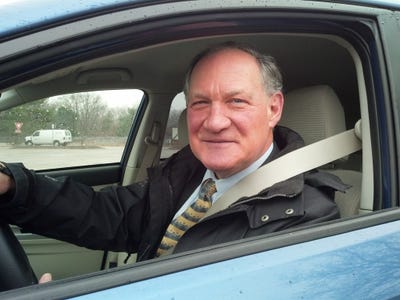Car Dealer Customers, Employees Are Different Today
“It’s less about selling,” says Merlin Stevenson of GP Strategies.

Today’s car buyers are different than before – and consequently auto dealers should handle them in new ways, says automotive consultant Merlin Stevenson.
“The auto industry is one of the most disrupted in the world, across the whole chain,” says GP Strategies’ vice president-automotive. “Retail is the most affected part.”
Accordingly, many sales staffs are shifting their approaches to consulting to curating customer experiences.
“It’s less about selling,” Stevenson says at an online CXAUTO2021 conference presentation entitled People as a Key to Automotive Retail Transformation.
“When handling empowered customers, it comes down to (customer) experience and convenience.”
Fifty-five percent of modern customers have done their online homework and arrive at the dealership fully informed about their vehicle of interest, he says. With such people, salespeople “need to do deep listening.”
The main reason 70% of car shoppers visit a dealership is for a test drive, Stevenson says. “Don’t just make the test drive a spin around the block. Let them experience the vehicle.”
He breaks down today’s customers into four categories: dealer-trusting traditionalists who usually are older, hybrid customers who shop and research both digitally and in-person, online savvy modernists and online-focused information seekers.
Because empowered customers’ online shopping and researching extends to vehicle pricing, “wiggle room is reduced” when it comes to price negotiation, says Stevenson (pictured below, left).
Dealership service departments should strive to provide positive experiences, too, but for service customers, “every service visit is considered an inconvenience,” he says.

Merlin Stevenson
Then there’s the new and varied dealership workforce, he says, noting dealerships now cover four generations of employees: Baby Boomers and Generations X, Y and Z.“It is a big challenge managing all of them,” Stevenson says. “They range from experienced salespeople to digital natives. The challenge is managing an organization that enables all employees to reach their potential and contribute to the team.”
In the digital age, frontline salespeople need traditional skills but also virtual-selling and social-media skills, he says. Moreover, dealerships should use data in decision-making. “Properly used data brings us closer to customers.”
Steve Finlay is a retired WardsAuto senior editor. He can be reached at [email protected].
About the Author
You May Also Like





.jpg?width=700&auto=webp&quality=80&disable=upscale)